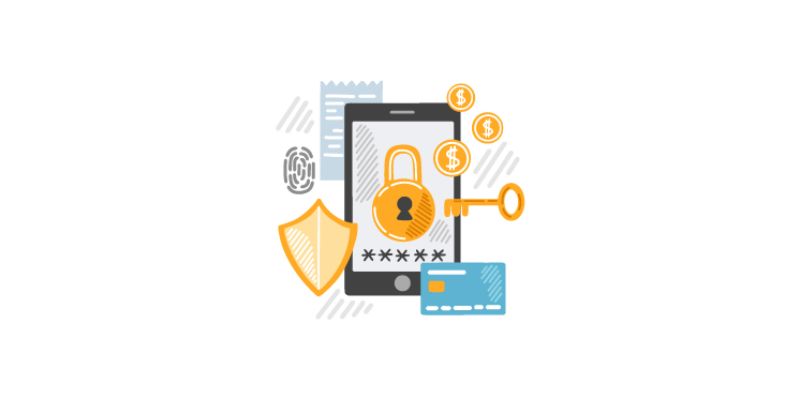Navigating the maze of digital payment platforms can feel daunting. As your go-to expert, I’ll make it simple. How to choose a digital payment platform shouldn’t be a game of guesswork. Your business deserves a system tailored to your unique needs. Whether you’re selling handmade crafts or high-tech gadgets, the right platform fuels your growth, secures your transactions, and delights your customers. Let’s dive in and pinpoint the one that checks all your boxes.
Assessing Your Business Payment Needs
Evaluating Payment Gateway Features for Your Business Size and Type
Selecting a payment gateway isn’t just picking a service. It’s finding a partner that grows with you. Ask, “Does this fit my business size and type?” Don’t rush. Take time to compare the choices.
Big shops and small ones need different things. A large online store might want many payment types. Small local shops might need simpler tools. Think of what your customers use. Some might like mobile payment options. Others might prefer plastic cards. Consider this in your choice.
Need more? Look for digital wallets, POS system compatibility, and even accepting cryptocurrency. If you sell abroad, multi-currency help is key. Always keep a sharp eye on fees. These can sneak up on you.
Security is huge. A single breach can hurt your trust. Customers want to know they’re safe. So, go for platforms with strong fraud prevention and PCI-DSS requirements. These keep both of you secure. Remember, a safe customer is a repeat customer.
Is your site ready for your payment choice? It must play nice with your online shop. Seamless integration with eCommerce is a must. This means fewer headaches for you and your team.
Identifying Core Payment Processor Selection Criteria
Now, how do you pick your payment partner? Let’s dive in. Focus on these key points:
- Transaction Speed: Buyers hate to wait. Pick a gateway that’s quick.
- Fees and Charges: Always check for hidden costs. These can add up fast.
- User Experience: Simple checkouts mean happy customers. Don’t make it hard for them to give you money.
- Customer Support: When things go wrong, you need help ASAP. So does your customer.
- Scalability: As you grow, can your gateway handle more sales? It must.
- Fraud Prevention: Stop trouble before it starts. A good gateway helps with this.
- Chargebacks: These are a pain. Get help to handle them right.
- Reporting Tools: You must track what’s happening with your sales. Reporting features can show you how well your gateway does this.
What about the future? Well, you’ll want a payment system that adapts. Customer habits change. What works today might not tomorrow. Choose something that’s built to last.
When you’re thinking, “What fits my business best?” check reviews. See what others say. But take your own needs as key. Not all five-star reviews mean it’s right for you.
To sum up, know your business well. Think of today and down the road. A good choice now can mean a smooth sail later. Pick well, grow strong, and sell more. This is how you find your payment match.

Delving into Payment Gateway Specifications
Comparing Security Features of Top Payment Platforms
When picking a payment gateway, its security is key. What are top ones like? They have strong layers to keep money safe. Here’s why that matters. You don’t want to lose money or let customer data leak out; it could ruin your business. Providers like PayPal or Stripe often update their security to guard against threats. Look for things like encryption, which scrambles data so sneaky folks can’t read it. Secure Sockets Layer, or SSL, is good too. It puts up a wall between user data and hackers.
You should also check for compliance with standards like PCI-DSS. This is like a safety promise for card payments. It says your payment system meets tough requirements. Always see if your payment gateway sticks to this. It means they take protecting card info seriously.
Some gateways offer fraud detection. They watch out for odd transaction patterns. This can help stop fraud before it gets bad. Don’t forget to see if they offer tools for you to check for risks yourself.
Understanding the Impact of Fees and Charges on Your Bottom Line
Ever wonder how fees from payment gateways can affect you? They can eat into your profit if you’re not careful. Each swipe, tap, or online sale can come with a fee. These fees can vary. They might be a fixed price like 30 cents or a percentage of the sale. It looks small at first, but it adds up!
Some charge monthly fees or fees to set things up. Think about how you do business. A shop with heaps of small sales might lose more to fixed fees. If your items cost a lot, percentage fees could be bigger.
Don’t stop at just knowing the fees. Consider how gateways handle different currencies if you sell worldwide. Some charge more for this. Others make it seamless, which could make customers happy.
Transaction speed is part of it too. Quick payments can help cash flow. It can also make customers more likely to come back.
Remember, balance is key. Cheaper isn’t always better if the service is weak. Pay for what will keep your business booming and customers smiling. When folks buy from you, they should feel it’s easy and safe.
Choosing the right payment platform is a huge step. You want to pick one that grows with you and keeps costs clear. This makes sure you and your customers are happy. You can learn more about this in articles on payment processor selection criteria or digital wallet comparison. Keep these tips close as you choose the best way to get paid. It can make a big difference to your bottom line and how your customers see you.

Enhancing the Customer Payment Experience
The Role of User Interface in Streamlining Checkout Processes
A simple checkout wins hearts. A complex one loses customers. That’s the blunt truth in today’s fast-paced digital world, where every second counts, and no one has the patience for a clunky payment process. It’s all about the sleekness of the user interface. Think of it like a quick, clean pass in sports – it’s got to be easy, smooth, and, most importantly, successful. Choosing a payment gateway with a user-friendly interface is crucial as it greets your customer at a critical moment – the transaction.
First, ask, is the layout clear? Big, bold buttons and step-by-step prompts guide customers seamlessly. Look for visual cues that lead the way. Remember, confusion is the enemy. Next, check if it easily fits all screens. Everyone shops on different devices. A mobile-first design ensures no customer is left behind. Speed is also key. Does the gateway process payments quicker than you can say “sale”? If yes, you’re onto a winner.
Now, integration with your eCommerce platform should be smooth. If your digital store and payment process feel like one, customers are kept in a happy bubble – no disruptions, no grumbles. Finally, make sure personalized options are not just a fancy term but true service. Can your customer save their info and zip through next time? That’s the true test of a tailored experience.
Choosing the Right Mobile and Digital Wallet Options for Your Customers
When we talk about digital wallets, think of them as the cool, tech-savvy cousin of the bulky old leather wallet. They should make life easier for both you and your customer. But how do you pick from the crowd? It’s a mix of knowing your customers and understanding the options.
Think variety and security first. Does the wallet support cards, bank transfers, and more exotic options like cryptocurrency? Great! Is it known for iron-clad security? Even better! Customers will only trust you with their money if they feel it’s safe. Support for multi-currency transactions means you’re ready for the global stage, inviting customers from all corners of the globe.
Examine mobile friendliness. If a customer can pay with a few taps on their smartphone, they’ll come back for the ease of it. Also, look for platforms that speak your customer’s language, literally. Local language support can make your shop feel like home to diverse shoppers. Peak at how they handle things when they go south. Good customer support can turn a mishap into a moment of trust.
Lastly, don’t forget that a platform’s reliability can impact your reputation. Go for time-tested uptime, which means the system’s always ready when your customer is. In this realm, a moment of downtime is a lost sale. And when your payment process is as smooth as silk, you’ll win a place in your customer’s digital heart – and that’s priceless.

Integrating and Managing Your Online Payment System
Seamless E-commerce Integration and Custom Payment Processing Options
When you pick a payment platform, think ease and fit. Does it mesh well with your online shop? A good fit means no headaches when adding it to your site. It should feel like a part of your store, not a clunky add-on. You need easy API access for payments and tools that let you tailor how you get paid. This gives you control to match the way you do business.
Customizable payment processing is key. Each business is unique. So your payment needs are too. You should be able to set up your payment gateway to fit those needs. Want to accept different types of currency? Multi-currency support is a must-have. This lets buyers from all over shop without fuss. Quick transaction speed matters too. No one likes to wait, especially not customers ready to buy.
Addressing Fraud Prevention and Chargebacks Efficiently
Now, let’s talk safety. Dealing with money online can be risky. You must have top-notch security features on your payment platform. This means following PCI-DSS requirements, always. It’s not just about checking off a box. It’s about keeping your customer’s info locked tight.
Fraud prevention measures should be high on your list. Look at what tools the platform offers. Can it spot a dodgy deal before it’s too late? You want this sorted from the start. Fraud can hurt your wallet and your rep. The same goes for handling chargebacks. Chargebacks can be a nuisance. Pick a platform with a solid plan to manage them. It saves time and keeps your cash where it belongs.
Good customer support in payment services is crucial. When things go south, you need help, fast. A payment platform with a quick-help team means less stress for you. They can fix bumps before they become mountains.
In all, when evaluating payment gateways, focus on how well they blend with what you already have, how they can grow with you, and how they guard against risks. Make sure your choice makes paying online easy, safe, and suited to your business’s style. Choose wisely, and you’ll have a system that works smoothly, keeping you and your customers happy.
In this post, we dug deep into picking the right payment system for your business. We looked at how to match your business size and type with the best payment gateway features and the must-haves when picking a payment processor.
We also explored the tech side, comparing security of top platforms and how fees affect your earnings. The customer’s checkout experience matters too, so we discussed user-friendly interfaces and wallet options that make buying a breeze.
Finally, we covered the importance of e-commerce integration and fighting fraud. It’s clear: the right payment solution improves sales and trust. So choose wisely, and your business will thrive.
Q&A :
What factors should I consider when selecting a digital payment platform?
When choosing a digital payment platform, consider factors such as security measures, user experience, compatibility with your business infrastructure, transaction fees, payment processing time, and customer service quality. Look for platforms that use encryption and fraud detection to protect financial data. Choose one with an intuitive interface, easy navigation, and seamless integration with your existing systems. Compare transaction fees and processing times to find a cost-effective and efficient option. Lastly, ensure they offer reliable customer support.
How important is security in digital payment platforms?
Security is paramount for digital payment platforms due to the sensitive nature of financial transactions. A secure platform should employ robust encryption protocols, multi-factor authentication, regular security audits, and compliance with industry standards such as PCI DSS. It should also offer features for fraud detection and prevention, as well as articulate clear policies for what happens in case of unauthorized transactions. Ensuring high levels of security builds trust with users and protects both customers and businesses from financial loss and data breaches.
Can the choice of digital payment platform affect my customers’ experience?
Absolutely, the choice of digital payment platform can significantly impact your customers’ experience. A platform that’s easy to use, with quick transaction processes and a straightforward interface, can enhance customer satisfaction and encourage repeat business. Platforms that support various payment methods cater to a wider customer base. On the other hand, a complicated or unreliable system could frustrate users, leading to cart abandonment and damaging your brand reputation. Therefore, user experience should be a key factor in your decision.
Are there any hidden costs when using digital payment platforms?
While reputable digital payment platforms should be transparent about their fee structure, some may have hidden costs that businesses need to be aware of. Potential hidden costs include setup fees, monthly or annual service charges, transaction fees for certain payment methods, currency conversion fees, chargeback fees, and termination fees if you decide to switch providers. Always read the fine print and ask questions to fully understand the cost implications before committing to a digital payment platform.
How does the payment processing time vary between digital payment platforms?
Payment processing times can vary widely between different digital payment platforms based on the technologies they use, the type of transactions processed, and the policies of the banks involved. Some platforms offer instant or near-instant processing, while others may take a few business days, especially for ACH transfers or cross-border transactions. It’s essential for businesses to understand these time frames as they can affect cash flow management and customer satisfaction. When evaluating platforms, consider how their processing times align with your business needs.

